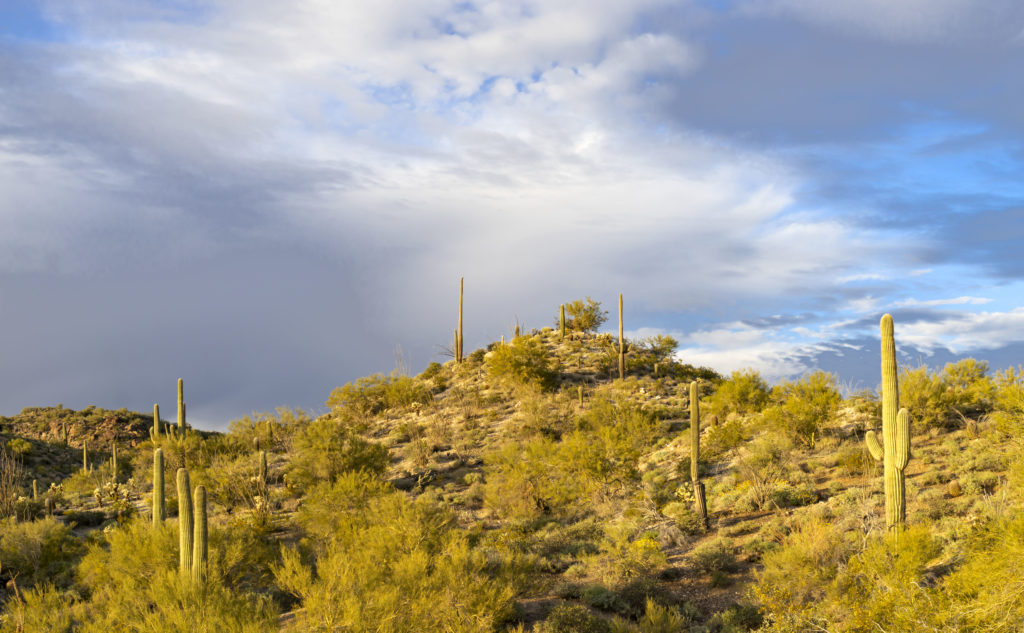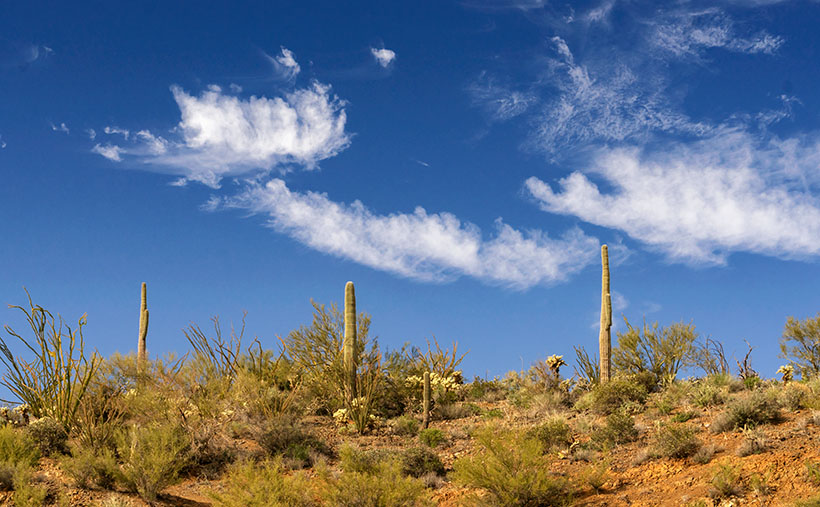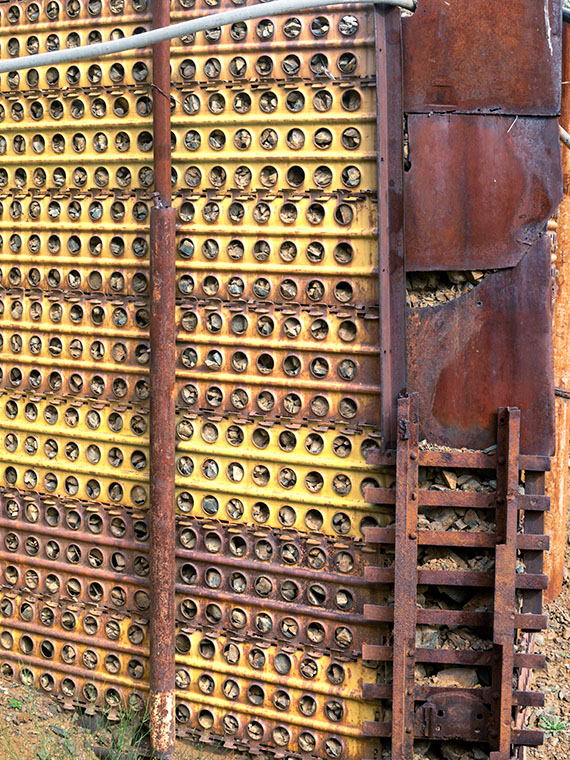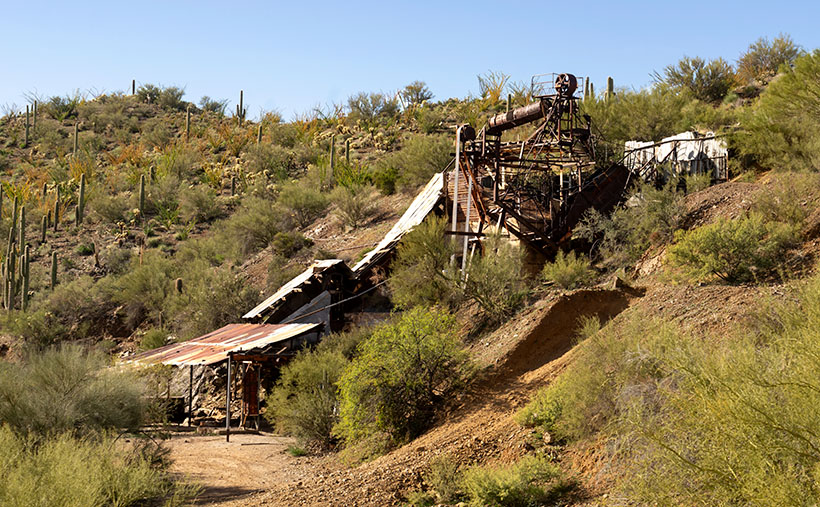I didn’t have to travel far for this month’s featured subject; in fact, there’s one growing in our park’s entrance. I’m talking about Joshua Trees—which are not trees, but lilies on steroids. They only grow in the southern deserts of Arizona and neighboring states. The Mormons were the ones that named them because the trees looked like the prophet waving them on to their promised land. Whoa, don’t Bogart that joint, Ebenezer. According to this Arizona Highway’s article, Territorial Governor John C. Fremont called them the most repulsive tree in the vegetable kingdom.
Although most people associate Joshua Trees with the national park in California and the band U2’s first album, Arizona’s grove covers a large area either side of U.S. Highway 93 from the State Route 71 junction 22 miles north to the Santa Maria River. If you’ve driven to Vegas, it’s the long downhill run in between the Tres Alamos Wilderness and the Date Creek Range. ADOT put up designation signs for that section, and then they added more signs that read “Joshua Trees” if you couldn’t spot them. Queen Anne’s the only person I know that hasn’t seen the roadside trees because she’s asleep the moment the car door closes.
Joshua trees have been in the news lately—not here, but at the national park in California. During the recent government shutdown, vandals took advantage of the lack of staff and damaged gates, signs, and fences. They also knocked down and ran over a good number of the trees with off-road vehicles. How senseless and selfish. Joshua Trees are very slow-growing, so it will take centuries for them to recover.
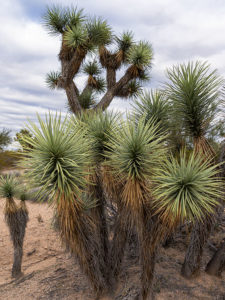
I found this week’s featured image while driving along the dirt road under power lines. There the trees were dense, so it was like trying to pick only one Victoria Secret Angel to photograph. The specimen that I selected had several new shoots growing under the parent plant. The way the young plants clustered around the adult reminded me of how aspen saplings cover a forest floor, so I called this image Joshua Saplings.
As usual, you can see a larger version of Joshua Saplings on its Web Page by clicking here. I hope you enjoy viewing this week’s post and next week; we’ll show another featured image from Joshua Tree Parkway.
Until next time — jw

